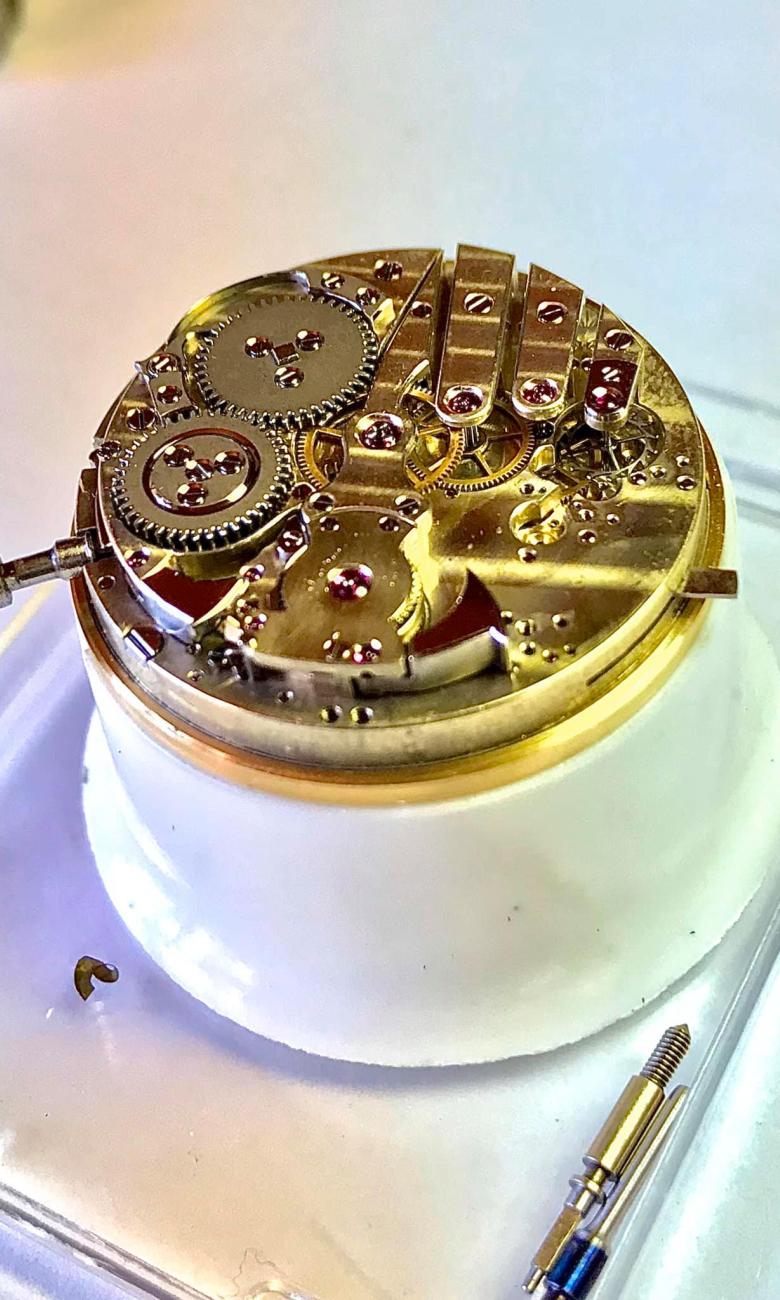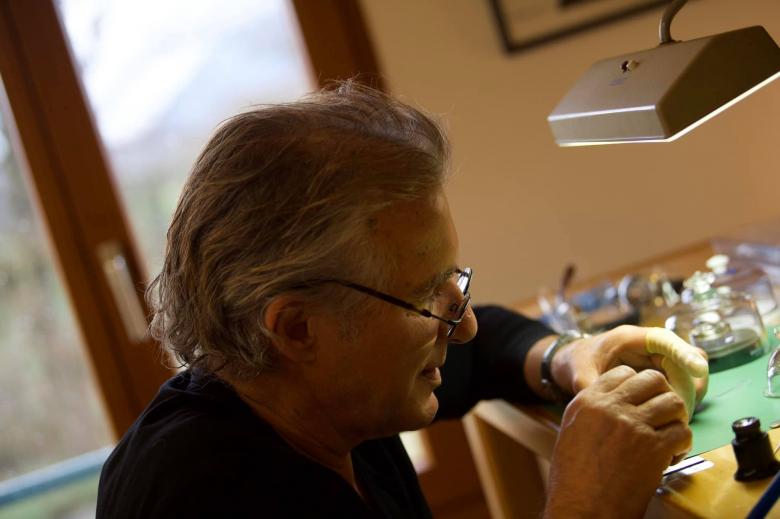The Swiss – Artisans of Time
Watches are often associated with Switzerland – a cliché that reflects reality. Swiss watchmaking expertise has been famous and recognised internationally since the 17th century. Here is the story of a tradition that has overcome its share of crises, and is still very much alive.
From the clock tower to the wristwatch
The history of clock- and watchmaking started in Switzerland with clock towers and pocket watches. Régis Huguenin-Dumittan, director and curator of the Musée international d'horlogerie (MIH) in La Chaux-de-Fonds in the canton of Neuchâtel, explains that "between the 14th and 16th centuries, timepieces, manufactured by artisans, were few and far between. We know, for example, that the Liechti family of Winterthur specialised in clock towers as early as the middle of the 16th century. At that time, Switzerland was not a great power like France, the Netherlands or England. In those countries, prestigious timepieces were being designed and produced thanks to patrons of the arts and sciences. In contrast, work in Switzerland was focusing on the need or desire to better understand the cosmos and how to tell time. "During the early days of the Swiss Confederation, the small local watchmaking workshops in various regions could not retain the interest of great minds, some of whom left for other lands. Things did not start to change until the end of the 16th century, with the influx of French refugees into the canton of Geneva in particular.

Huguenin-Dumittan goes on, pointing out that "the Huguenots arrived in Switzerland with a know-how in watchmaking and goldsmithing that pushed production towards small watches." The production of prestigious, engraved and decorated timepieces took off. The canton of Geneva specialised in finishing and sales, while the production of mechanical watch movements spread throughout the Jura Arc region. "Legend has it that because the region's farmers were poor and idle in the winter months, many of them learned manufacturing trades. Watchmaking requires few tools and the presence of other industries such as iron, lacemaking and textiles allowed them to put their productive energy and their trading network to good use for the emergence of this new industry," Huguenin-Dumittan explains. From the 18th century, the Vallée de Joux specialised in pocket watches and La Chaux-de-Fonds became the leading manufacturer of Neuchâtel clocks. The Bernese Jura, Solothurn, Thun and Zurich also developed their watchmaking industries.

The Swiss watchmaking industry withstood the two world wars and Switzerland established a watchmaking cartel in the 1930s. "At that time, the United States, which applied modern industrial techniques, had started undercutting the Swiss system, which was made up of a multitude of factories that were not organised among themselves. This caused a crisis in the 1930s, which led to the creation of the first joint watchmaking organisations. During the same period, wristwatches became widespread. They were found on the wrists of the great explorers, at depths of over 10,000 metres in the Mariana Trench in 1960 and on the moon in 1969. But the challenge of the miniaturisation of electronics that arose in the 1970s, coupled with a new economic and geopolitical context, provoked a new crisis in the industry and changed the dynamics and tradition of Swiss watchmaking," says the MIH's curator.

From the mechanical watch to the quartz watch
Between 1970 and 1980, the development of quartz watches posed a threat to the Swiss watchmaking industry, which was for the most part producing mechanical watches. "In the 1960s, 60% of the world's watchmaking products were manufactured in Switzerland. The production process started there, with mechanical watches. Then, electrical and quartz components allowing for greater precision were added," says Huguenin-Dumittan. But Swiss watchmaking, still developing under state control, was then confronted with competition from Japan, which was industrialising quartz technology on a larger scale. Japanese watches became more accurate and cheaper than Swiss mechanical watches. The 'Swiss made' appeal was waning, wiping out the industry's sense of security.
The Lebanese-Swiss entrepreneur Nicolas Hayek was commissioned to conduct a last-chance analysis of how to save the industry. The banks intervened and ASSUAG and SSIH – the two major groups at the time – merged, keeping the Swiss watchmaking industry afloat. This turnaround was embodied in the Swatch in 1983. "With the advent of the Swatch, the Swiss quartz watch produced on a large scale, the notion of the Swiss watch as a precious metal object was swept aside, making way for the fashionable, colourful and inexpensive plastic object that consumers were looking for at the time," explains the MIH's director. And it has met with resounding success, with over 400 million Swatches sold since the first model was created. Today, Switzerland has three major watchmaking groups: Swatch Group, Richemont and LVMH. There are six watchmaking schools in the country, which has over 500 watchmaking companies. The craftsmanship of mechanical watchmaking and art mechanics has been inscribed on UNESCO's List of the Intangible Cultural Heritage of Humanity since 2020.
High-end watchmaking, handed down
The mass production of quartz watches broke the rules of traditional watchmaking in Switzerland. Initially, this change came as a blow for the workers and artisans making mechanical watches. Yet the artisanal techniques and tools intrinsic to producing mechanical watches embody history, tradition and excellence, and this reputation allowed them to hold their own. High-end watchmaking was born in the wake of this crisis. Although modern machines have replaced certain processes, the hand of the artisan, their eye and their sure instinct remain indispensable in the Swiss watchmaking industry, creating its added value. High-end watchmaking requires precise and specialised handiwork, and this savoir-faire is handed down in schools, companies and families. One such case is the Antoine Preziuso brand, whose workshop is located in the Geneva countryside.

I was born in the Jonction district of Geneva. It was full of all kinds of trades, including the watchmakers whom I would always visit and observe.
says Antoine Preziuso, a watchmaker whose brand bears his name. "These artisans would give me their discarded parts, such as dials, which I would take home to tinker with. My dad also worked in the watchmaking sector, making Rolex cases, and he had a workshop in the cellar. With him, I learned to assemble and disassemble mechanical parts. I was 7 years old and that's when my passion for watchmaking began." After his obligatory schooling, Preziuso enrolled at the Geneva watchmaking school to become a watchmaker. He was the valedictorian of his apprenticeship class and got a job at Patek Philippe, where he became a specialist in complex movements. The mechanical watch is a micro-cosmos: it is made up of a myriad of individual parts that are measured in millimetres. We assemble them with the help of a magnifying glass and our work must be meticulous to ensure their visual appeal," says the Geneva native.
Preziuso opened his own watchmaker's workshop in 1981 and created Sienna, his first watch, in 1985. Ten years later, he exhibited it at a trade fair and it attracted the attention of a Japanese watch-lover, who ordered 100. In the Preziuso family, which calls itself a "tick-tock family", the daughter became a jeweller and the son took after the father. Together, the two watchmakers made history by developing a movement that is unique the world over: 'le tourbillon des tourbillons' – the whirlwind of whirlwinds. Their creativity, passion and savoir-faire have earned them numerous awards. The father explains: "I am a creator. When I make a watch, I am like a painter in front of a blank canvas; I need inspiration. Sometimes the result is never reproduced and sometimes it's designed to be reproduced on demand. When I started out, I produced between 10 and 15 watches each year. Then I had an industrial phase during which we produced a thousand watches a year. I have now set back up my own watchmaking business, and I produce between 50 and 60 watches each year." The Swiss craftsman admires his country's watchmaking tradition. "I rub shoulders with veteran watchmakers who whisper in my ear secrets of their trade. Our know-how is part of our history. Our passion and precision are admired the world over. Everyone is fond of Switzerland, the country where everything goes tick-tock," concludes the Geneva watchmaker.




